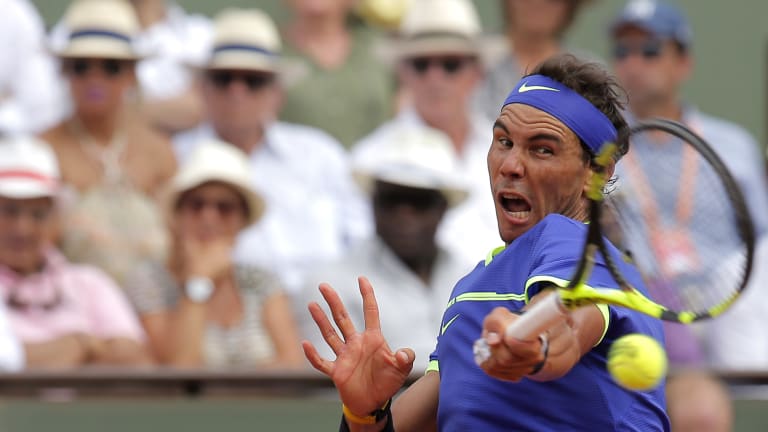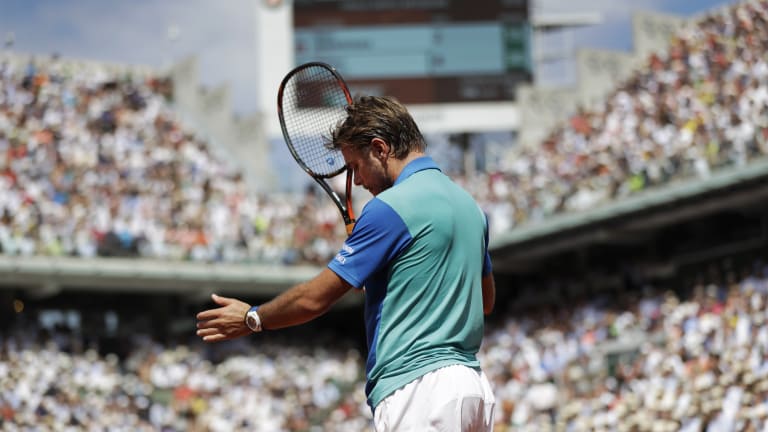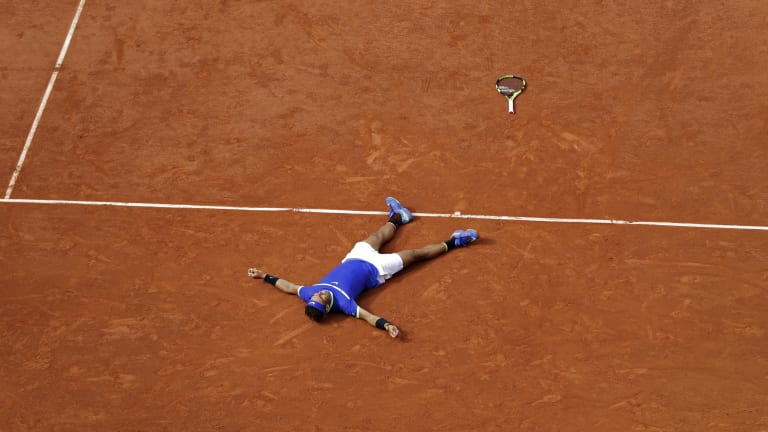Before the French Open men’s final, I thought that the result might hinge on how Stan Wawrinka felt about playing Rafael Nadal on clay. Would he feel the way he does when he meets Novak Djokovic in a major final? If so, Wawrinka clearly would believe he could win. Or would would he feel the way he does when he meets Roger Federer late in a Grand Slam? In that case, Stan would be a lot more pessimistic about his chances.
By the time Nadal had beaten Wawrinka for the title, 6-2, 6-3, 6-1, the answer was obvious: it didn’t really matter what Stan thought. Nothing in tennis history compares to facing Nadal at Roland Garros, and no mountain in tennis history has ever been as hard to climb. With this victory, Nadal won his 10th French Open; that’s the most by one player at a single Slam in the Open era. He won it for the third time without dropping a set. And he won it with the loss of just 35 games; only Bjorn Borg’s run through Paris in 1978, in which he dropped 32 games, was more stunningly efficient.


